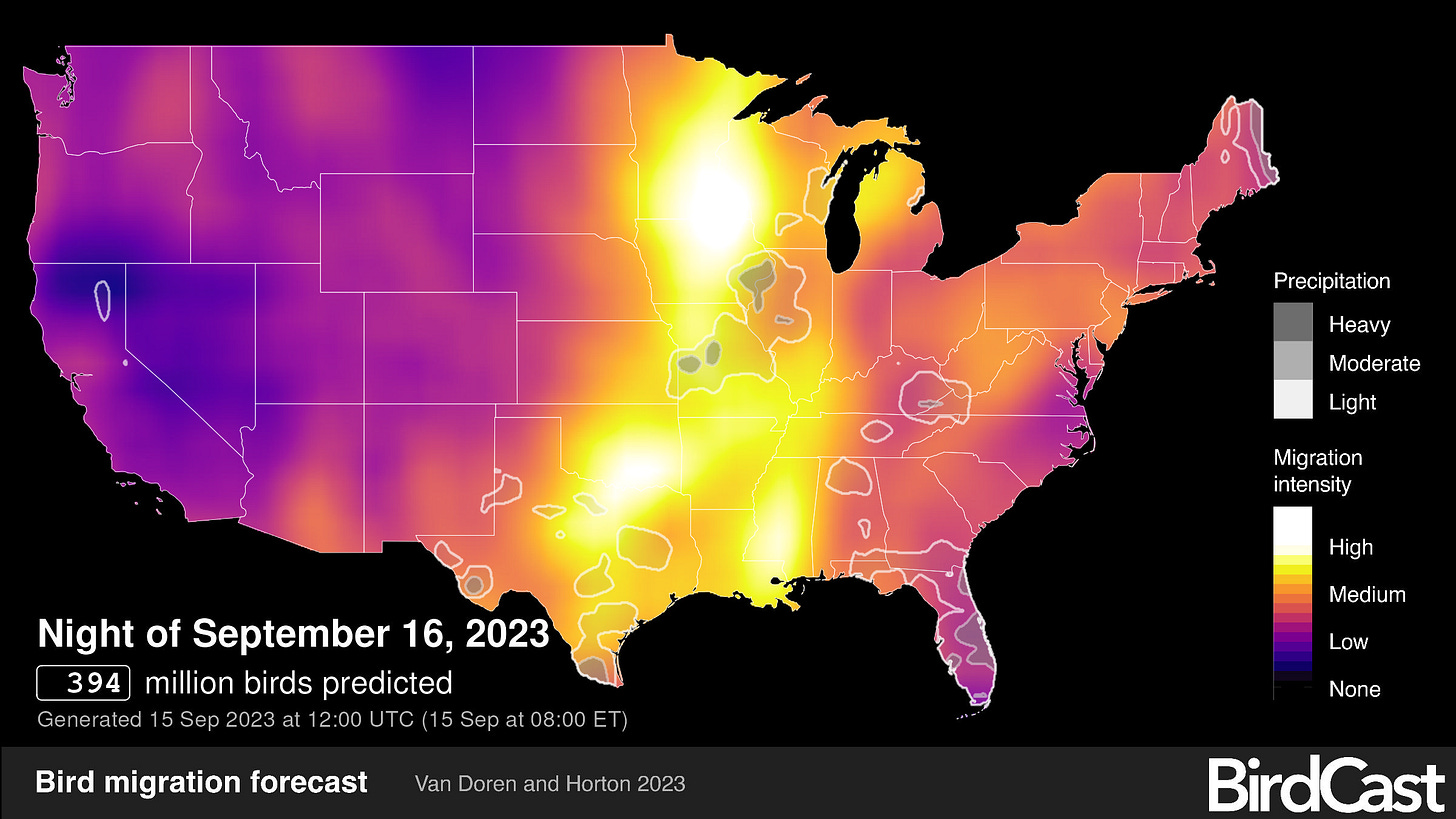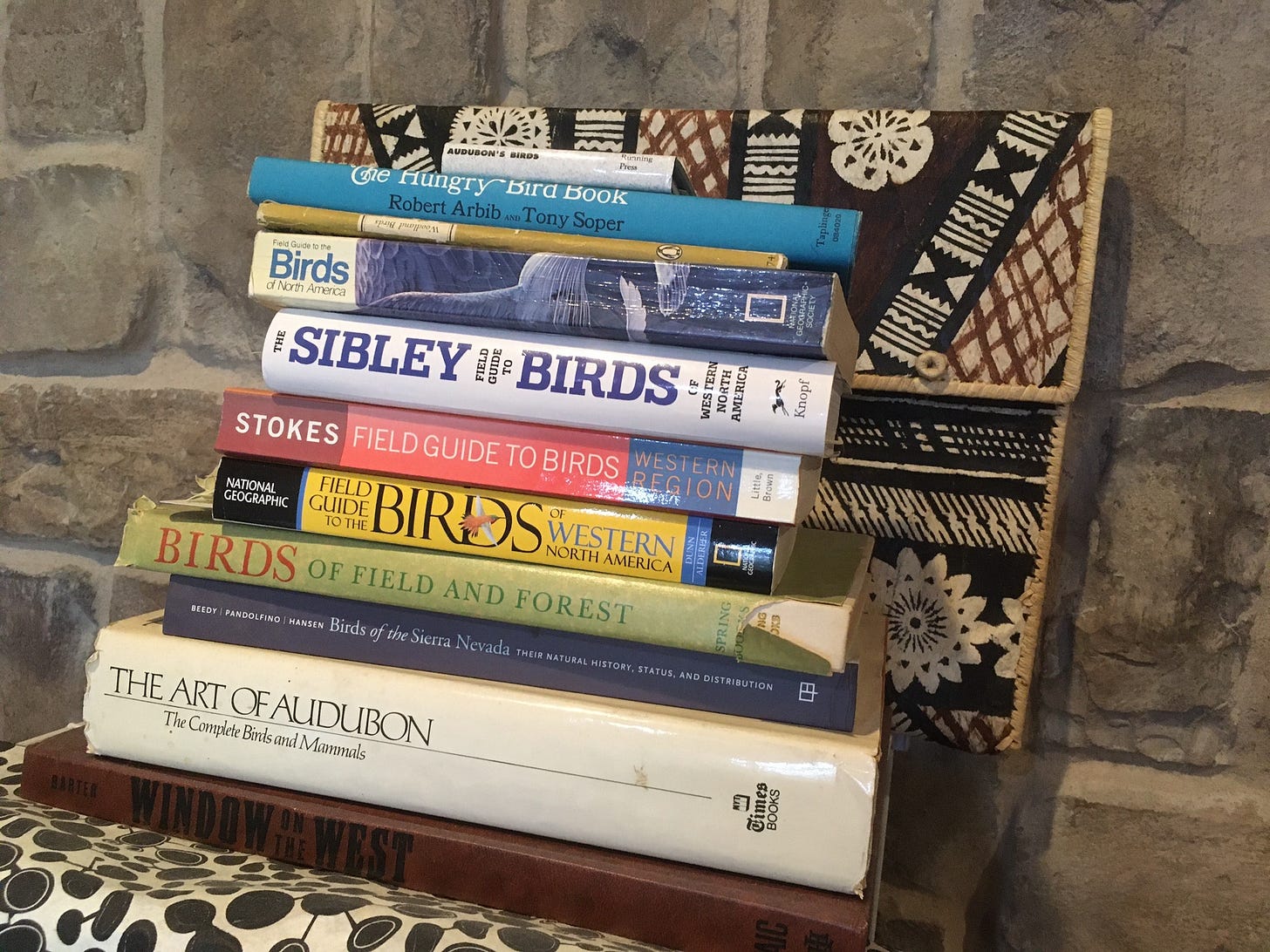
Birds have always been one of my steadfast connectors to the natural world. As a child, I lived with my family for several years in Ohio on the outskirts of a city, at the very edge of acres and acres of wooded hills. My mother was deeply interested in birds, and living in a very bird-aware home, I learned about them initially through osmosis.
In later years, living on the West Coast, I took daily hikes in a local 2000+ acre regional park. Along one part of the winding trail in a wide flat valley that stretched along a creek were cattails and tall grasses where I would almost certainly hear the echoing call of a red-winged blackbird. That call when I heard it was transformative—as if the song and my brain chemistry interlocked and created a cascade of immediate well-being.
According to Julia Zarankin, a contributor to Audubon Magazine, my experience is not unique. She writes:
A growing body of scientific evidence…shows that the joy delivered by birds isn’t just anecdotal. Research increasingly links exposure to nature—and specifically, exposure to birds—with improved wellbeing. In December [2020], a new study by the German Center for Integrative Biodiversity Research connected greater bird biodiversity to increased life-satisfaction for more than 26,000 people in 26 European countries. It turns out the people who live near natural areas with a greater diversity of bird species were demonstrably happier. In fact, the study found that seeing 10 percent more bird species generates satisfaction on par with a comparable increase in income.
Seeing a wide array of birds isn’t the only thing that affects our moods: so does hearing them. According to another recent study from researchers at Cal Poly, hikers who listened to birdsong while ambling on a trail have a more positive overall experience and feel greater joy.
Over the years, I've worked to deepen and expand my awareness and understanding of birds. I inherited a pile of bird books from my mother that have been inspirational. This photo shows just a few of them. (I bought the Birds of the Sierra Nevada from the illustrator, Keith Hansen, when I visited his studio, and a friend gave me the Sibley guide.)
But the source of some of my greatest learning today about birds and the challenges to their survival is the Cornell Lab of Ornithology, and in particular, their BirdCast project, a collaboration between several organizations. Started in 1999, BirdCast has evolved tremendously, today providing forecast and live bird migration maps. They use weather surveillance radar to study bird migration and they've made it all available to the public.
This week I've been spending a lot of time in the BirdCast Migration Dashboard to tune in to the birds migrating overhead in my county, beginning an hour after sunset. The image at the top of the post shows the national migration forecast for tonight. Try it yourself—use the Migration Dashboard to see what happened last night in the skies above your state or county, get the forecast for the days ahead, and see which birds are migrating overhead through your county. The live data feed runs from March 1 to June 15 during spring migration and from August 1 to November 15 during fall migration. So you have two months to dive in and discover all there is to learn from this incredible migration tool.
Start here with the Dashboard. Enter your county and explore. An estimated 38,700 birds crossed my county heading south on the night of September 14. How many are crossing yours?
Here’s the Weather Surveillance Radar and Bird Migration Primer to help you go a little deeper once you get your bearings. Do check it out.
Here’s a FAQ with an animation of how the radar works. It gives you a window into what radar ornithologists do. One of the goals of radar ornithologists is to locate important stopover and wintering locations, providing data-driven insights for conservation strategies. Once identified, steps can be taken to protect and save these key locations.
Learn more about The Basics of Bird Migration including why you should turn off nonessential lighting at night during migration.
I am still not a “birder.” It’s not my goal. I appreciate those humans who are, and I learn from them what I can. I know that birds need our attention. I’m trying to give them a greater share of mine.
I don’t want to lecture people about saving the planet. I want to share with them the joy of the natural world. It’s where we belong. By looking after it, we’re looking after ourselves.
—E. O. Wilson, naturalist
From the MDL Archives—Birds, Birds, Birds
Bird Tales - review of a lovely children’s book, Ruby’s Birds
The Requirements of Connection - check out the Bird Song Hero game from CornellLab
In the Wilds
“How Awe Walks Helped My Students Slow Down” - I wrote about the Greater Good Science Center, the work of Dacher Kelter, and GGSC’s new course Awe in Education: Creating Learning Environments that Inspire, Motivate, and Heal in The Interconnect just last week. I subscribe to the GGSC newsletter, and when I clicked to read one of the articles, I noticed the author was my friend of many years, Aran Levasseur. Give it a read to hear his students’ insights.
“The best kindergarten you’ve ever seen” - Beautiful design by architect Takaharu Tezuka…he has a great sense of humor. This video was submitted by a reader. Thank you. (9 min TEDx talk)
And from Yale Climate Connections, “A Gamer’s Quest to Prepare Kids for Climate Change” - a profile of Lil Milagro, founder of Mycelium Youth Network. “Lil played Dungeons and Dragons to escape reality. Then she realized that she could use the game to help others make sense of the world around them.”
Thanks for reading. Be well.



